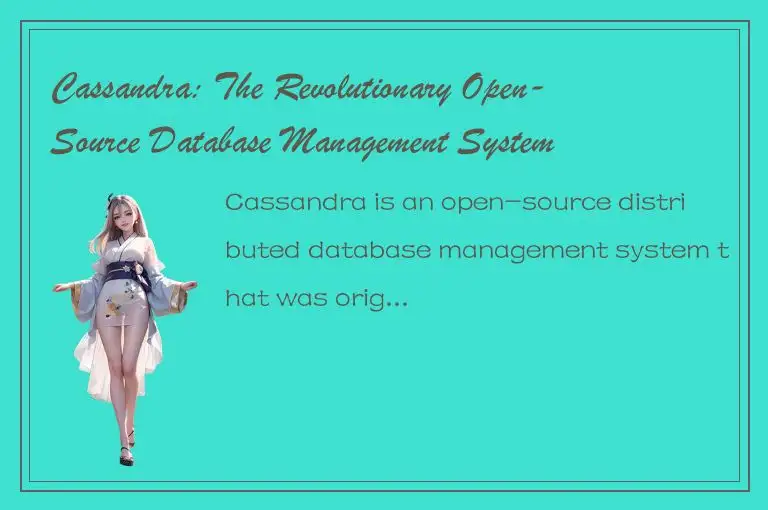Cassandra is an open-source distributed database management system that was originally created at Facebook. It was designed to handle large amounts of data across multiple commodity servers, providing high availability and fault tolerance with no single point of failure. Cassandra is a NoSQL database that is highly scalable and able to handle large amounts of structured and semi-structured data, from simple key-value pairs to complex data structures.

Cassandra was first released as an open-source project in 2008, and it quickly gained popularity for its ability to handle large amounts of data in a highly available and fault-tolerant way. Today, Cassandra is used by some of the largest companies in the world, including Apple, Netflix, Uber, and eBay.
One of the main advantages of Cassandra is its ability to scale horizontally. This means that as your data grows, you can simply add more commodity servers to your cluster to increase the capacity of your database. Cassandra is designed to handle petabytes of data across thousands of nodes, making it a highly scalable solution for big data applications.
Another advantage of Cassandra is its fault-tolerance. Cassandra is designed to replicate data across multiple nodes in a cluster, so if one node fails, other nodes can take over its responsibilities. This ensures that your data is always available, even if individual nodes fail.
Cassandra is also highly configurable, with many different options for tuning performance and scalability. Cassandra supports tunable consistency, which allows you to choose how consistent you want your data to be across your cluster. This means that you can choose to sacrifice a bit of consistency for better performance, or prioritize consistency over performance.
One of the main use cases for Cassandra is in large-scale web applications, where it is used to manage user data and other application data. Companies like Apple, Netflix, and Uber all use Cassandra to power their web applications, which require highly available and fault-tolerant databases that can scale to handle millions of users.
Cassandra has also become popular in the IoT (Internet of Things) space, where it is used to manage sensor data and other large data sets. The ability to handle large amounts of semi-structured data makes Cassandra an ideal solution for IoT applications, where data can be highly variable and difficult to structure.
Overall, Cassandra is a highly scalable, fault-tolerant, and configurable database management system that is changing the game in the world of big data. With its ability to handle large amounts of data across multiple commodity servers, Cassandra is a powerful solution for companies that need to manage large amounts of data in a highly available and fault-tolerant way. If you're looking for a database management system that can scale to meet the needs of your growing data, Cassandra is definitely worth considering.




 QQ客服专员
QQ客服专员 电话客服专员
电话客服专员